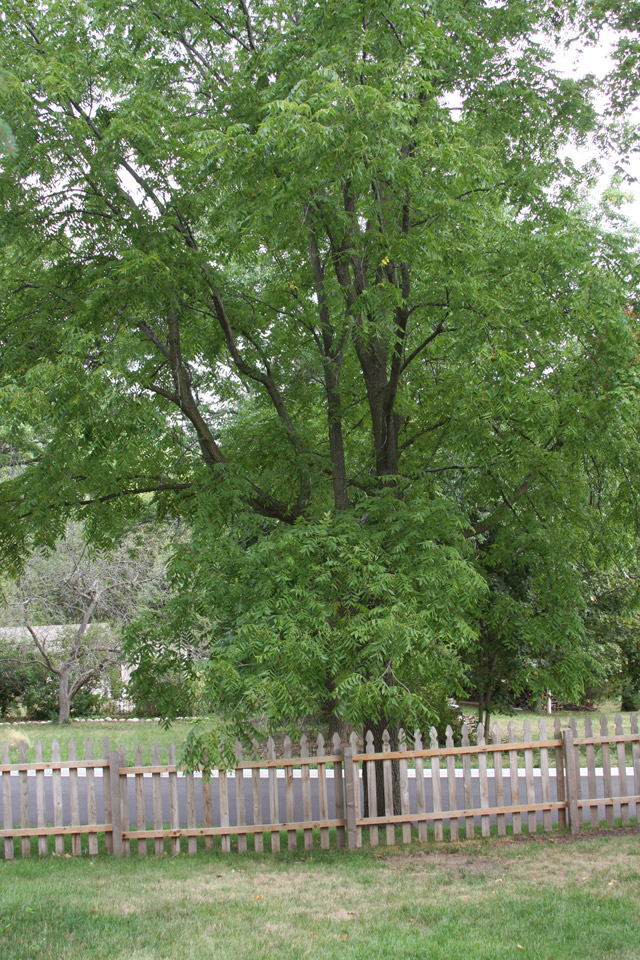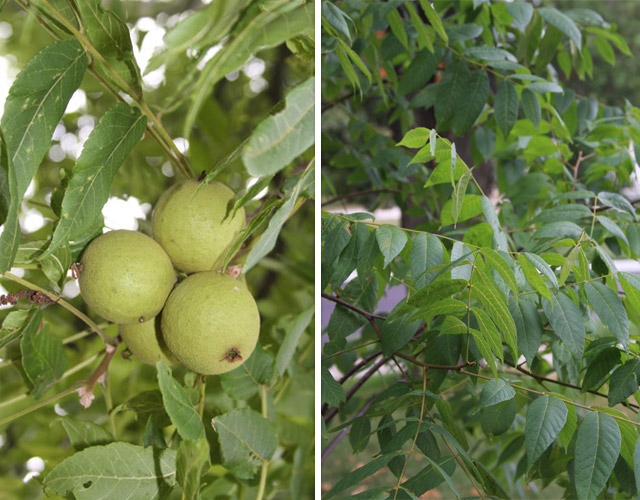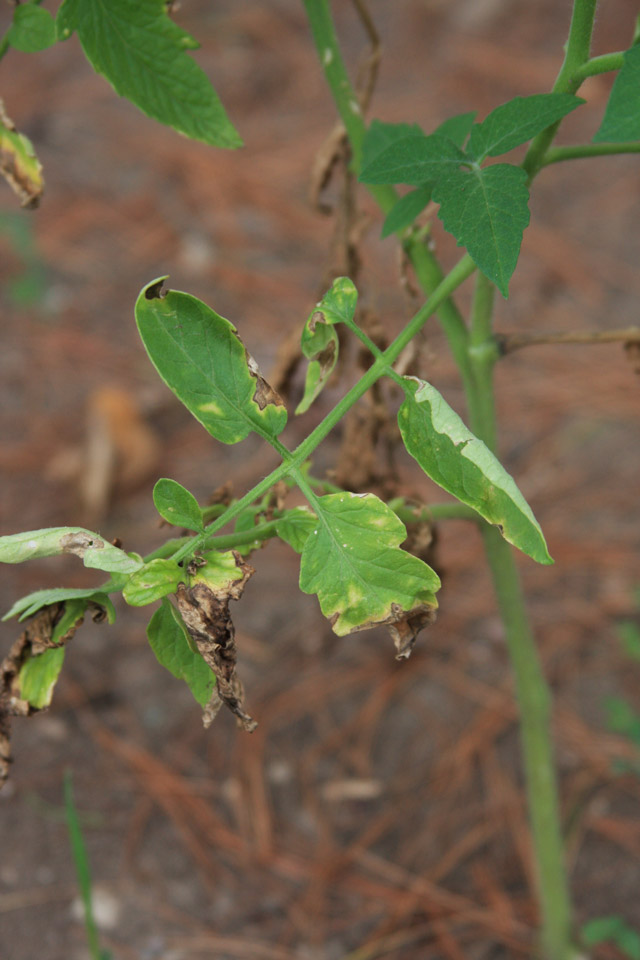
Beautifully tall with large compound leaves, the black walnut tree can truly be a wonderful addition to a large scale landscape. The problem with the, not one, but TWO black walnut trees that adorn my property is that I would by no means consider my little piece of the earth a “large scale landscape”. My husband and I reside on a corner lot near the downtown of our village. I believe it is officially just over the half-acre mark, which is by no means small in the scope of city postage stamp yards. However, it is still much too small for this beauty of a tree. And I’m not even talking about the size…
Black walnuts produce some of our most valuable native hardwood and, as I previously mentioned, can grow with quite the graceful look. So then just what is the issue with black walnut trees? Besides dropping larger than golf-ball-sized nuts (which causes quite the strain on your typical leaf rake in the fall), this tree is what we call allelopathic. This terms refers to the fact that the black walnut produces a substance that is potentially detrimental to the health and growth of other nearby plants. This is something which I learned early on in one of my first horticultural classes which specifically focused on the use of trees in the landscape. However, I never truly understood the importance of this truth until now as I attempt to grow my own landscape among these trees. The substance which black walnut trees produce is a chemical called “juglone” (makes sense that the black walnut is a member of the Juglans genus). This chemical occurs naturally throughout the tree, with the highest concentration found in the buds, nuts, and root systems. The leaves and stems contain smaller amounts of this substance which will actually leach into the soil if left to remain on the ground for long periods of time. Plants that have been affected will often begin to show signs of stress, such as yellowed, curling leaves. Unfortunately, this process is irreversible and almost always ends in the death of the plant.

The walnuts typically grow in clusters of three or more. The nuts turn brown after falling from the limbs. The leaves are extremely compound, giving the branches almost a tropical look.

The first symptoms of aversion to the black walnut tree’s substance is yellowed, curling leaves like these shown here on my tomato plant.
Am I saying the world should be abolished of black walnut trees? Absolutely not! In our case, my husband and I have had numerous discussions revolving around the fate of our trees. Do we let them live? Do we cut them down? Being the nature lover I am, I find it hard to end the life of a healthy plant which provides wonderful shade to our backyard during these hot summer days. So what can I (and you, if perhaps you suffer from a similar dilemma) do about it? Is it possible to live in harmony with a black walnut? Most definitely. A few key things to keep in mind:
- The tree is only toxic to those plants living within its root zone. A typical tree’s root zone extends out to the drip line (or furthest external edge of the tree’s canopy). Plants outside of this drip line should not be adversely affected unless they are extremely young and sensitive.
- Clean up leaves and walnuts as quickly as possible after falling. As I mentioned previously, the harmful substance can actually leach into the soil if these parts of the tree begin to decay on the ground. Cleaning them up and removing them is essential to avoiding this leaching process. Also, try to avoid putting walnut husks and/or leaves in any type of compost pile as this will cause contamination among all of the compost created.
- Choose plants that are known to not be bothered by the toxicity. While there are quite a few plants that will surely not tolerate this toxic substance (such as asparagus, tomatoes, columbines, peonies, hydrangea, and lilacs, to name a few), there is also quite a list of those that will grow perfectly fine among the shelter of the black walnut. Here are just a few of the most popular selections:
-
- Trees: most maples, serviceberry, redbud, honeylocust, and most oaks
- Evergreens: arborvitae, junipers, eastern hemlock
- Shrubs: forsythia, sumac, black and purple raspberry, most viburnum, ninebark, and honeysuckle
- Perennials: clematis, astilbe, bleeding heart, most ferns, grape hyacinth, daylilies, tulips, and phlox
Hopefully this post will give you a little bit better understanding about black walnuts and how to identify them. As for me, I’ve learned my lesson after now unsuccessfully growing tomatoes two years in a row not far from one of my trees. (So much for my “Tackling Tomatoes” this year, hey?) I don’t know why I didn’t think of that before! For more information and a more exhaustive list of plants that will live harmoniously with the black walnut, visit this page from The Morton Arboretum.


